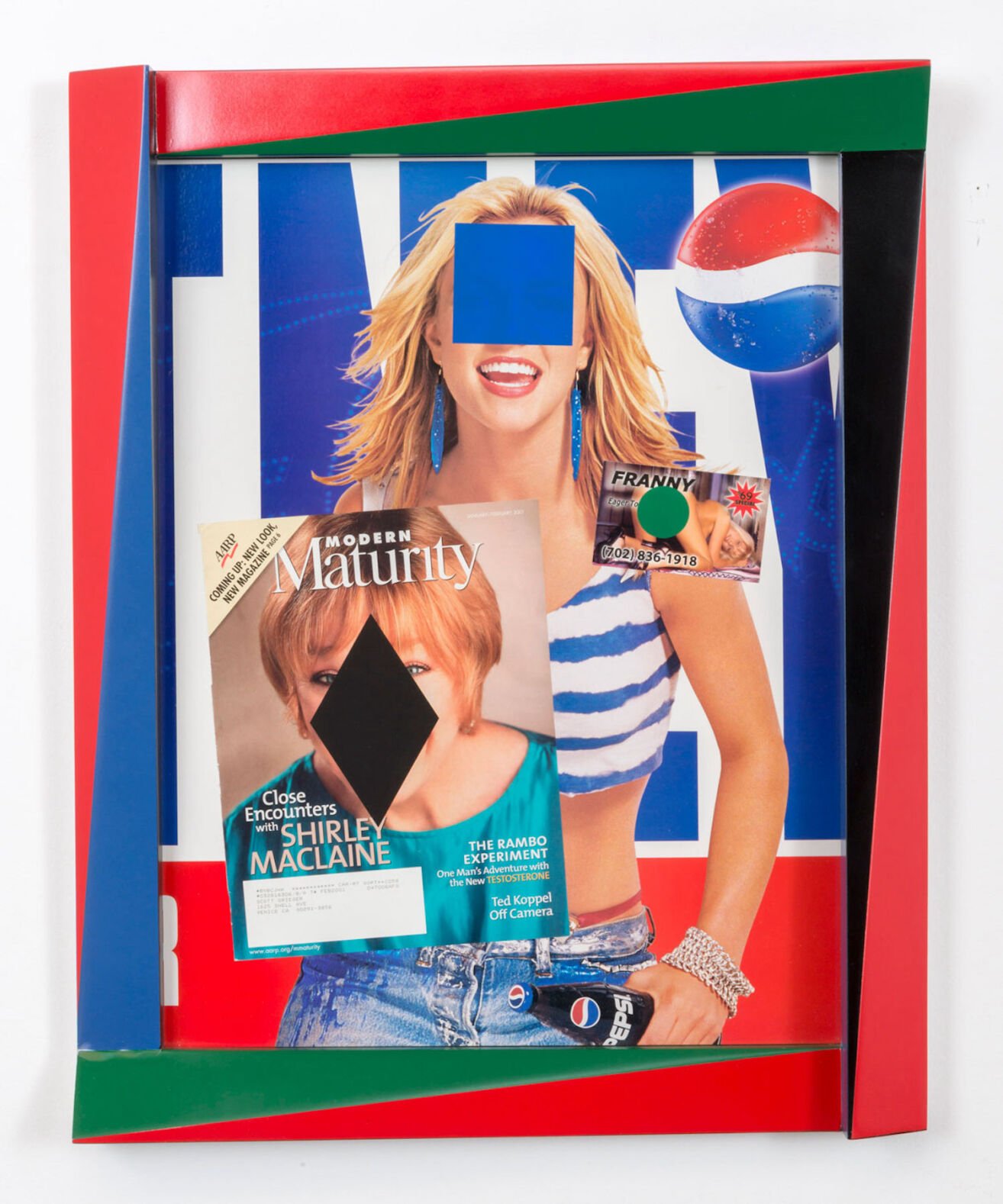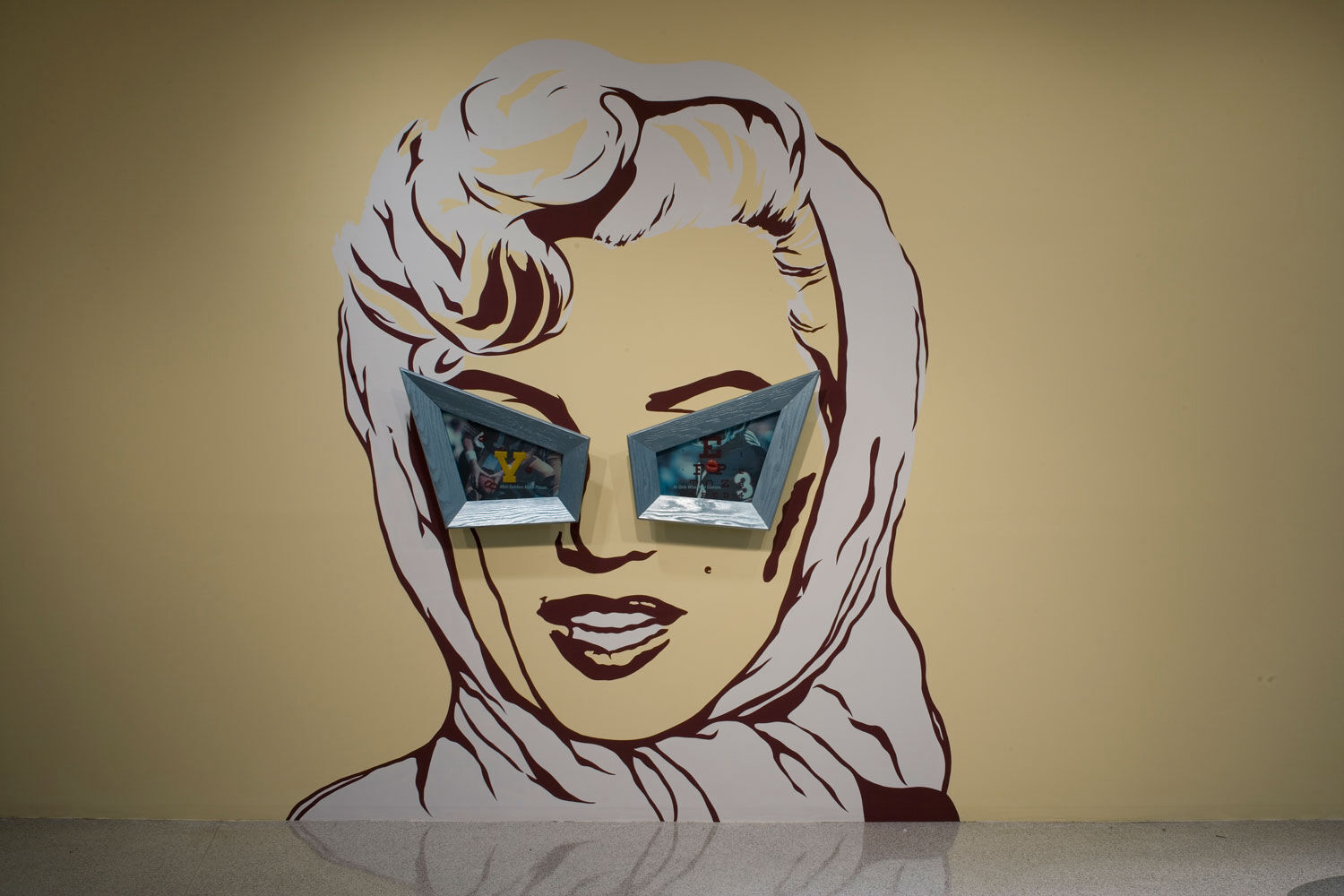Alexis Smith pasted herself together like a collage, creating someone whose work feels familiar yet wholly new.
Take, for example, Your Name Here (1975), her self-constructed director’s chair with “Alexis Smith” imprinted on it. The viewer is left with the quandary as to whom the name refers: the artist or the 1940s-era actress? It also reflects Smith’s ongoing inquiry into how she defines herself (she changed her name from Patti Smith to Alexis Smith while at UC Irvine’s nascent and radical art department in the mid-sixties).
Smith became a formidable force in the SoCal contemporary art world. Her collages—encompassing literature, movie, and pop culture themes—are all imbued with symbolism from the American Dream. This dream is on display in an important new exhibition at The Museum of Contemporary Art San Diego, which features a selection of 50 of her early artist books, intimate collages, recent wall paintings, and room-sized installations. Called “The American Way,” it’s the first retrospective of the iconic artist in 30 years.
As Smith has said, “I think artists are people who come to grips with their own peculiarities and try to make it something positive. I may be kind of goofy, but I turn it into something viable.”

Alexis Smith – Degree of Difficulty, 2002
The threads tying this show together are Smith’s inventive use of iconography from historical works and pop culture; her creative compilations of found materials, including scrapbooks from her childhood; and her self-confidence, enabling her to transcend traditional artistic boundaries.
Smith’s visually familiar Men Seldom Make Passes at Girls Who Wear Glasses (1985) features a large portrait of Marilyn Monroe wearing cat-eye sunglasses, with each lens containing a photo of football players. The subliminal message is that men, not women, are the objects of desire.
Smith’s deeper motivations, described in the accompanying catalog by curator Anthony Graham, are “self-invention and reinvention, whether through questions of identity and the roles of women in U.S. society or criticisms of the pretenses of wealth and class.”
As Smith evolved beyond her university training, exhibiting in major museums, she created The American Way (1980), a mixed-media collage of pop culture symbols on aluminum printing plates. It contains a Lucky Strike ad, a Coke bottle, a toy airplane, and play money, among other images, with passages from novels by American writer John Dos Passos. Graham explains, “The collage conveys the American way as both elusive and disorienting.”
One cannot aesthetically pigeonhole Smith’s oeuvre, as it is so expansive and varied by an artist who has blazed her own path. Yet her dozens of pieces in this exhibition speak to viewers engaged in the deeper vicissitudes of historical and pop cultures and how these cultures inform our lives today. Now in her twilight years (Smith has been diagnosed with Alzheimer’s disease), MCSAD is showcasing her decades-long art practice with this compelling retrospective.

Alexis Smith, cover


















